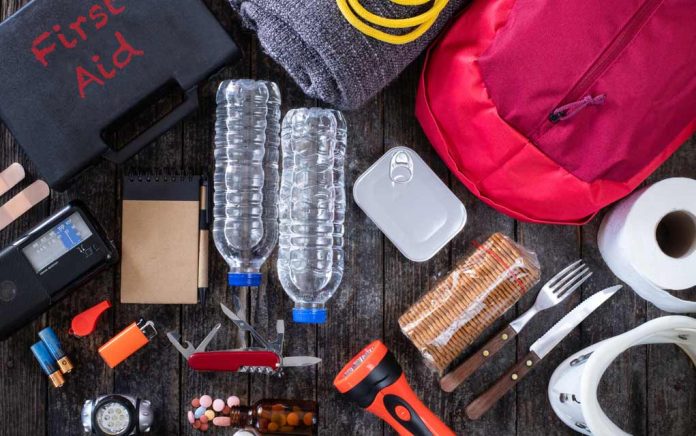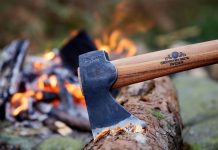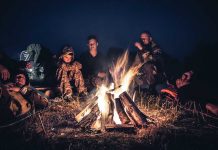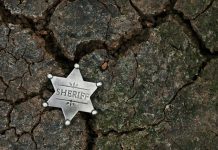(SurvivalDaily.com) – Having a Bug Out Bag (BOB) at the ready is comparable to owning insurance; you hope to never use it, but you’re grateful it’s there when you need it. Being ready to leave home in the event of an emergency should be common sense; unfortunately, many people don’t see it that way. For those who do, it helps to have someplace to start with the basics.
Why Bother?
What could ever force you out of your home, you ask? Let’s take a look at recent events in Australia — the fires raging across the country have led to mandatory evacuations in many areas. Other natural, and manmade, disasters have the potential to make you leave with short notice: Earthquakes, hurricanes, riots, war or even a house fire can drive you out of your sanctuary.
When faced with such events, having a well-stocked BOB can make all the difference in the world. A bit of preparation can go a long way in keeping you alive after the SHTF.
What to Pack?
Now that we’ve established why having a BOB is practically a necessity, what should you put in it? This’ll vary a bit depending on where you’re located; if you live in a cold region your pack will be a bit different than someone’s who lives in the tropics. But all bags are based on the same basic principle — survive whatever is thrown at you.
Shelter – Extreme situations can lead to fatalities within three hours without shelter. If the situation isn’t extreme, you don’t need a BOB to begin with. If it is, you want to be as prepared as possible for whatever comes your way.
- Tent – a lightweight hiker tent as it won’t take up a lot of space in your bag.
- Tarp – you can build a makeshift tent with a tarp if yours is lost or damaged. They can also be useful for a multitude of other survival tasks, such as ground cover or collecting dew for drinking water.
- Sleeping bag – this will vary according to your climate, as not all sleeping bags are rated for the same temperatures. You want one that can cope with your environment.
- Emergency space blanket – these are lightweight, will keep you alive, and can reflect light to signal for help in an emergency.
- Ground Pad – for a little bit of comfort.
Water – Without water, you could be in life-threatening trouble in three days.
- Bottled water – you will want about three liters of water in your bag.
- Water purification – a combination of water purification tablets and a Lifestraw should be kept here.
- A metal water bottle – so you can easily boil water.
Food – You can last for up to three weeks without food, but it wouldn’t be a very pleasant experience.
- Cooking utensils – A metal pot, a metal cup, and a means of starting a fire to cook.
- Spork in a best-case scenario, knife at the very least.
- Protein bars.
- Meals Ready to Eat (MRE) – at least three.
Clothing – The clothing you pack in your BOB will also depend on your environment. You want high-quality gear here though, so that it’ll stand up to the elements.
- Wool hiking socks – three pairs.
- Hat.
- Gloves.
- Shoes/Boots.
- Rain poncho.
- Long Sleeve shirt.
- Pants.
- Underwear.
- Thermals.
- Sunglasses.
First Aid – This should be fairly obvious; you’re going to want first aid equipment with you after any kind of emergency.
- First aid kit.
- Medication – have a supply of any prescription medication you are taking.
- Insect repellant.
Personal Hygiene – Just because you are in an emergency situation doesn’t mean you can forget about your hygiene. Keeping your body clean can go a long way toward keeping healthy.
- Toothbrush & toothpaste.
- Hand sanitizer.
- Camp soap.
- Toilet paper – this can be purchased in travel-sized containers to take up less space in your bag.
- Small towel.
Lighting – When you’re forced to bug out, you may have to do it at night. Make sure you have items in your bag that can light your way.
- LED Flashlight and LED headlight.
- Candles.
- Hand crank charging light.
- Extra batteries – swap these out every once in a while; they won’t do you any good if they die in your bag.
- Glowsticks.
Knives & Tools – This is where some survivalists can get a bit carried away — remember you only have a finite amount of space in your bag. Also, if you weigh it down too much, you run the risk of exhausting yourself or sustaining injuries. You won’t get too far if your back goes out on you.
- Survival Knife.
- Multitool.
- Machette, hatchet, or saw.
- Signal mirror.
- Compass.
- Lighter – at least two.
- Waterproof matches.
- Emergency whistle.
- Local map.
- Duct tape.
- Paracord.
- Small sewing kit.
- Trash bags – it’s surprising what you can use these for in a pinch.
- Spare cash.
- Pen/pencil and a small notepad.
Self Defense & Hunting – Depending on the situation, you may need to defend yourself or hunt for food. Make sure you have the right equipment with you. This section will depend greatly on the laws in your area.
- Handgun.
- Hunting Rifle.
- Pepper Spray/bear spray.
- Survival Bow – there are some great options on the market now for foldable survival bows. As a bonus, in a long term scenario you can make your own arrows.
- Extra ammunition.
- Fishing kit.
- Snare.
This is a basic list of things one should consider having in their Bug Out Bag. Each person’s bag will be a bit different, based on their climate and personal preference, but the foundations are generally the same. It will also vary based on which member of the family the BOB is designed for — your child’s bag will be different from the one you’re carrying (for obvious reasons).
Make a bag for each member of your family, and train them on how to use each item in it. Keep in mind the less you have to rely on restocking, the better off you are. Starting off, you might pack a battery-powered flashlight, but eventually move on to a portable-solar-power one. Use what you have now, and perfect it as time goes on.
Copyright 2021, SurvivalDaily.com

















